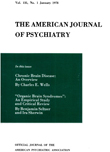EVALUATION OF EEG PATTERNS OF NEWBORN BABIES
Abstract
1. One hundred and thirty-six neonates were given EEG examinations during the first few hours following birth. Babies with caesarean section, with no prolonged anesthesia and no complications, showed the most "ideal" EEG's, characterized by a relatively high percentage of records within the alpha frequency range, very low incidence of spikes and no delta-silence pattern despite of the presence of analgesia.
2. Neonates born with non-caesarean birth seem to have as a group a mark of the passage through the pelvic canal as they show a considerably lesser percentage of records within the alpha frequency range. No difference was found in these patterns between mild analgesia, moderate analgesia, heavy analgesia and long anesthesia, provided that cases with or with-out clinical complications are analyzed separately. However, the incidence of delay of breathing and fetal distress was higher in neonates with heavy analgesia than in those with moderate and particularly in those with mild analgesia.
3. Neonates with obstetrical complications, whether born by section or particularly by non-caesarean birth, show a considerably decreased incidence of records with alpha-like activity. The presence of delta-silence pattern was observed in about one-third of the records and the incidence of spikes in about one-half of the records of babies born during markedly complicated deliveries.
Access content
To read the fulltext, please use one of the options below to sign in or purchase access.- Personal login
- Institutional Login
- Sign in via OpenAthens
- Register for access
-
Please login/register if you wish to pair your device and check access availability.
Not a subscriber?
PsychiatryOnline subscription options offer access to the DSM-5 library, books, journals, CME, and patient resources. This all-in-one virtual library provides psychiatrists and mental health professionals with key resources for diagnosis, treatment, research, and professional development.
Need more help? PsychiatryOnline Customer Service may be reached by emailing [email protected] or by calling 800-368-5777 (in the U.S.) or 703-907-7322 (outside the U.S.).



